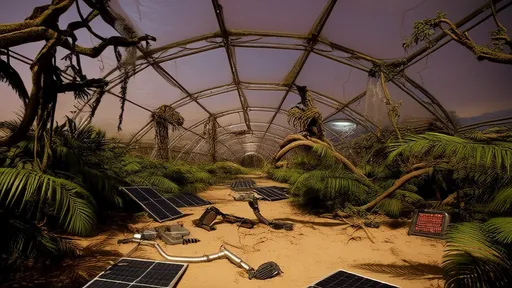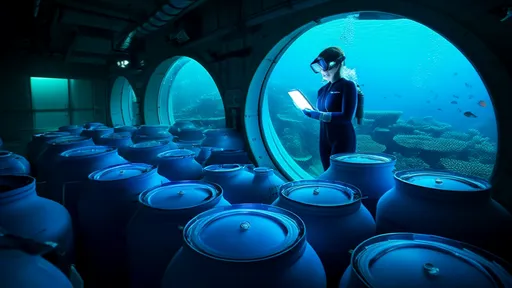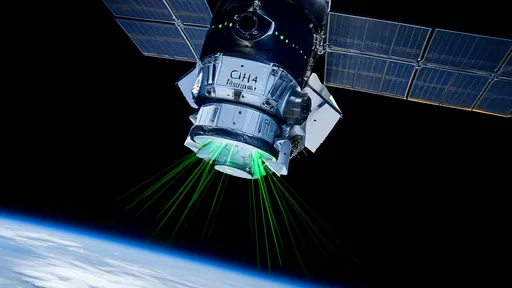The vast, sun-drenched deserts of the world have long been considered ideal locations for large-scale solar energy projects. With their expansive, unused landscapes and abundant sunlight, these regions appear to be the perfect solution for humanity’s growing demand for clean, renewable energy. Yet, as solar farms proliferate across arid regions, scientists are uncovering a paradoxical phenomenon: these installations may be altering local climates in unexpected ways. The so-called "solar panel desert paradox" raises critical questions about the unintended consequences of large-scale renewable energy infrastructure.
At first glance, the concept seems counterintuitive. Solar panels, after all, are designed to harness energy without emitting greenhouse gases or other pollutants. However, recent studies suggest that the physical presence of vast arrays of photovoltaic panels can disrupt the delicate balance of desert ecosystems. The panels absorb sunlight and convert it into electricity, but they also alter the albedo—the reflectivity—of the desert surface. Darker solar panels absorb more heat than the naturally light-colored sand, potentially leading to localized warming. This shift in surface temperature could, in turn, influence wind patterns, humidity levels, and even precipitation in the surrounding areas.
One of the most striking findings comes from research conducted in the Sahara Desert. Simulations have shown that covering even a fraction of the desert with solar panels could lead to significant changes in regional climate. The panels reduce the amount of sunlight reflected back into the atmosphere, causing the surface to warm. This warming effect can disrupt atmospheric circulation patterns, potentially reducing rainfall in adjacent regions. In a cruel twist of irony, the very technology meant to mitigate climate change could inadvertently exacerbate drought conditions in some of the world’s most vulnerable areas.
But the story doesn’t end there. The interaction between solar panels and desert environments is complex and multifaceted. Some researchers argue that the panels could have a cooling effect at night. Unlike natural desert surfaces, which radiate heat quickly after sunset, solar panels retain warmth for longer periods. This could create a moderating effect on nighttime temperatures, potentially benefiting certain plant and animal species. However, the long-term ecological implications of such changes remain poorly understood.
The impact on desert flora and fauna is another area of concern. Deserts may appear barren, but they are home to a surprising diversity of life adapted to extreme conditions. The shading effect of solar panels could alter microclimates, creating cooler, moister patches in an otherwise harsh environment. While this might sound beneficial, it could disrupt the life cycles of native species that rely on consistent patterns of temperature and sunlight. Invasive species, better suited to these new conditions, might outcompete native plants and animals, leading to unforeseen ecological consequences.
Water usage is another unexpected factor in the desert solar paradox. Many large-scale solar installations use water to clean dust and debris off the panels, ensuring maximum efficiency. In arid regions where water is already scarce, this demand could strain local resources. Some newer technologies, such as water-free cleaning systems or hydrophobic coatings, aim to address this issue, but their widespread adoption remains limited. The trade-offs between energy production and water conservation highlight the need for careful planning and sustainable design in renewable energy projects.
Despite these challenges, the potential benefits of desert solar energy are too significant to ignore. The world’s deserts receive more energy from the sun in a few hours than humanity consumes in an entire year. Tapping into this resource could play a crucial role in transitioning away from fossil fuels. The key lies in developing strategies to minimize unintended environmental impacts. This might involve optimizing the spacing and arrangement of solar panels to reduce their effect on local climates, selecting sites with minimal ecological sensitivity, or integrating solar farms with other land uses, such as agriculture, in a way that benefits both energy production and the environment.
Scientists and engineers are also exploring innovative solutions to mitigate the solar panel desert paradox. One promising approach is the use of bifacial solar panels, which capture sunlight on both sides and are mounted higher off the ground. These panels allow more light to reach the desert surface below, potentially reducing the warming effect. Another idea is to incorporate reflective materials or vegetation around solar farms to help maintain the natural albedo of the area. Such hybrid systems could balance energy generation with environmental preservation.
The debate over desert solar farms underscores a broader truth about renewable energy: no solution is entirely without trade-offs. As the world races to decarbonize, it is essential to consider not just the carbon footprint of new technologies, but their broader ecological and social impacts. The solar panel desert paradox serves as a reminder that sustainability requires a holistic approach—one that weighs the benefits of clean energy against the need to protect fragile ecosystems and the communities that depend on them.
Looking ahead, the challenge will be to scale up renewable energy in a way that is truly sustainable. This will demand collaboration between scientists, engineers, policymakers, and local communities. It will require robust environmental assessments, adaptive management strategies, and a willingness to rethink designs as new information emerges. The deserts of the world may yet become the powerhouses of a clean energy future, but only if we navigate the complexities of their ecosystems with care and respect.
In the end, the solar panel desert paradox is not a reason to abandon large-scale solar projects, but rather a call to approach them with greater nuance and foresight. The transition to renewable energy is one of the defining challenges of our time, and getting it right will mean balancing innovation with environmental stewardship. As we harness the sun’s boundless energy, we must also ensure that we do not unintentionally dim the delicate balance of the planet’s most arid landscapes.

By /Jul 2, 2025

By /Jul 2, 2025

By /Jul 2, 2025

By /Jul 2, 2025

By /Jul 2, 2025

By /Jul 2, 2025

By /Jul 2, 2025

By /Jul 2, 2025

By /Jul 2, 2025

By /Jul 2, 2025

By /Jul 2, 2025

By /Jul 2, 2025

By /Jul 2, 2025

By /Jul 2, 2025

By /Jul 2, 2025

By /Jul 2, 2025

By /Jul 2, 2025